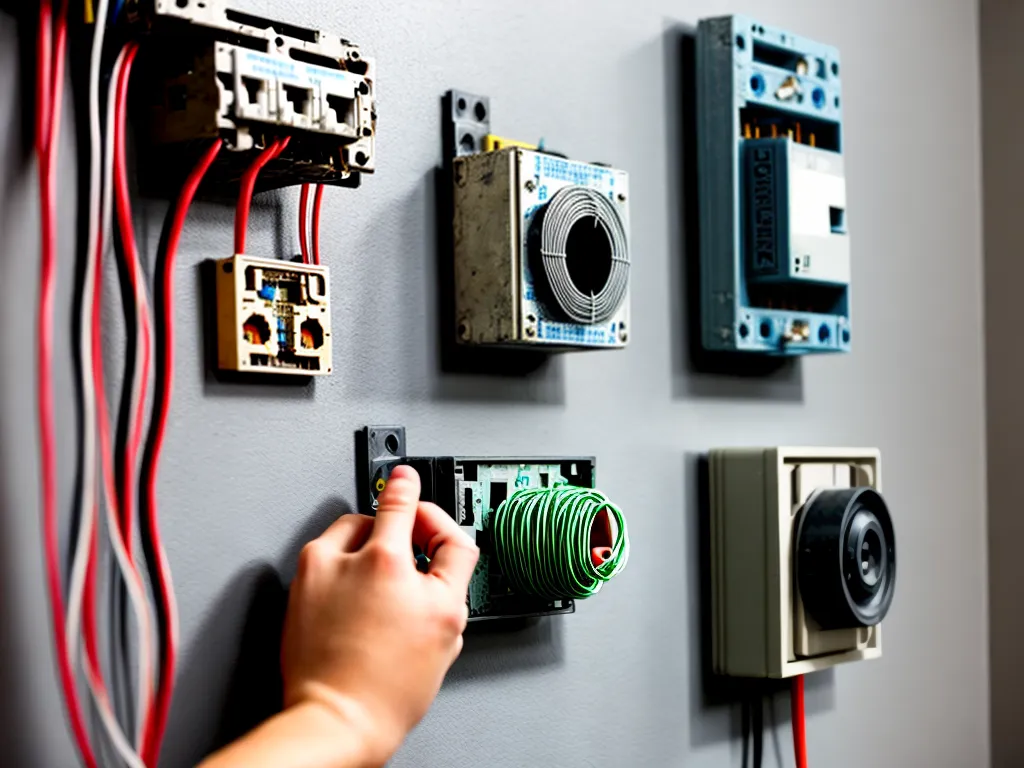
Introduction
With the cost of living continuing to rise, many homeowners are looking for ways to reduce expenses around the house. One area where you can save a substantial amount of money is on electrical work and wiring projects. Rather than hiring an electrician and buying all new materials, you can often reuse obsolete or salvaged electrical components to wire parts of your home. This guide will walk through everything you need to know to safely and legally use obsolete electrical components to wire your home's lighting, outlets, and switches.
Gathering Obsolete Electrical Components
The first step is gathering a stockpile of obsolete electrical components to use. Here are some of the best sources to find these:
-
Habitat for Humanity ReStore - These reuse stores often have lighting fixtures, switches, outlets, and wiring for very cheap. Check back frequently as inventory changes.
-
Online auction sites - You can find large lots of vintage electrical supplies on auction sites. Focus on components like switches, receptacles, breakers, and wire.
-
Estate sales - When someone passes away or moves to a nursing home, their home's contents are often sold. Look for leftover supplies the electrician left behind.
-
Your own renovation waste - When you renovate part of your home, keep any electrical parts you remove like switches, outlets, and wiring (as long as they're in good condition).
The key is looking for common electrical components made before the 1990s. They are obsolete by today's standards but still viable for certain household wiring projects.
Evaluating Component Condition
Before using any salvaged electrical component, you need to thoroughly evaluate its condition. Here are the main factors to check:
-
Broken parts - Inspect for cracks, damaged terminals, missing pieces, etc. Even small breaks can impact function or safety.
-
Corrosion - Check contacts and terminals for oxidation or corrosion. Use very fine sandpaper to gently clean if needed.
-
Wear - Examine components closely for wear like flattened or stretched screws, worn threading, loose parts, etc. Replace overly worn parts.
-
Insulation condition - Carefully inspect wire insulation. Look for cracked, damaged, or dried out insulation. Don't use wire with compromised insulation.
-
Functionality - Test components like switches and outlets to ensure they still function properly before installing.
Only use obsolete electrical supplies that are in excellent functional condition for wiring projects. Components that are broken, corroded, worn out, or have damaged insulation pose safety risks and should be discarded.
Applications in Home Wiring
Obsolete electrical components have the most reuse potential for these types of household wiring projects:
Lighting Circuits
- Switches
- Light fixtures
- Junction boxes
- Ceiling fans
Outlet Circuits
- Receptacles
- GFCI outlets
- Electrical boxes
- Wire and cable
Appliance Circuits
- Breakers
- Wire
- Outlets
For any major rewiring (like service panel replacement), you'll need to use modern supplies up to current code. But lighting, switches, and basic outlets are areas where salvaged parts can safely be incorporated.
Electrical Code Considerations
While using obsolete electrical components can save money, you need to be careful not to violate any electrical codes. Here are some key factors to keep in mind:
-
Permits - Depending on your local jurisdiction, you may need permits for electrical work. Research permit requirements beforehand.
-
GFCI protection - For outlet circuits, GFCI outlets may be required. Consider adding GFCI breakers if needed.
-
Box fill - Don't overload electrical boxes with too many wires. Check your local codes for box fill limitations.
-
Tamper-resistant receptacles - Modern codes require tamper-resistant outlets. You may be able to find obsolete ones that still have this feature.
Always check your local electrical code before planning a wiring project with salvaged parts. As long as you follow safety guidelines, many jurisdictions allow the careful reuse of older electrical components.
Safety Precautions
It's crucial to understand electrical safety procedures before attempting to install reused electrical components yourself:
- Turn off power at the breaker box and verify it's off before starting any work.
- Use a non-contact voltage tester to double check wires are not hot.
- Follow proper wiring techniques and use junction boxes where required.
- Carefully label each circuit at the breaker after completing work.
- Consider having the finished work inspected before restoring power.
Rushing or skipping safety steps can risk shock, fire, or electrocution hazards. Take things slowly and be cautious when using salvaged electrical parts.
Conclusion
With some creativity and caution, obsolete electrical components can be an affordable and eco-friendly choice for certain home wiring projects. Focus on reusing common parts like switches, receptacles, and lighting fixtures. Thoroughly inspect salvaged components and make safety your top priority. As long as you follow electrical codes and standards, you can save substantially on electrical costs by repurposing old electrical devices and supplies.